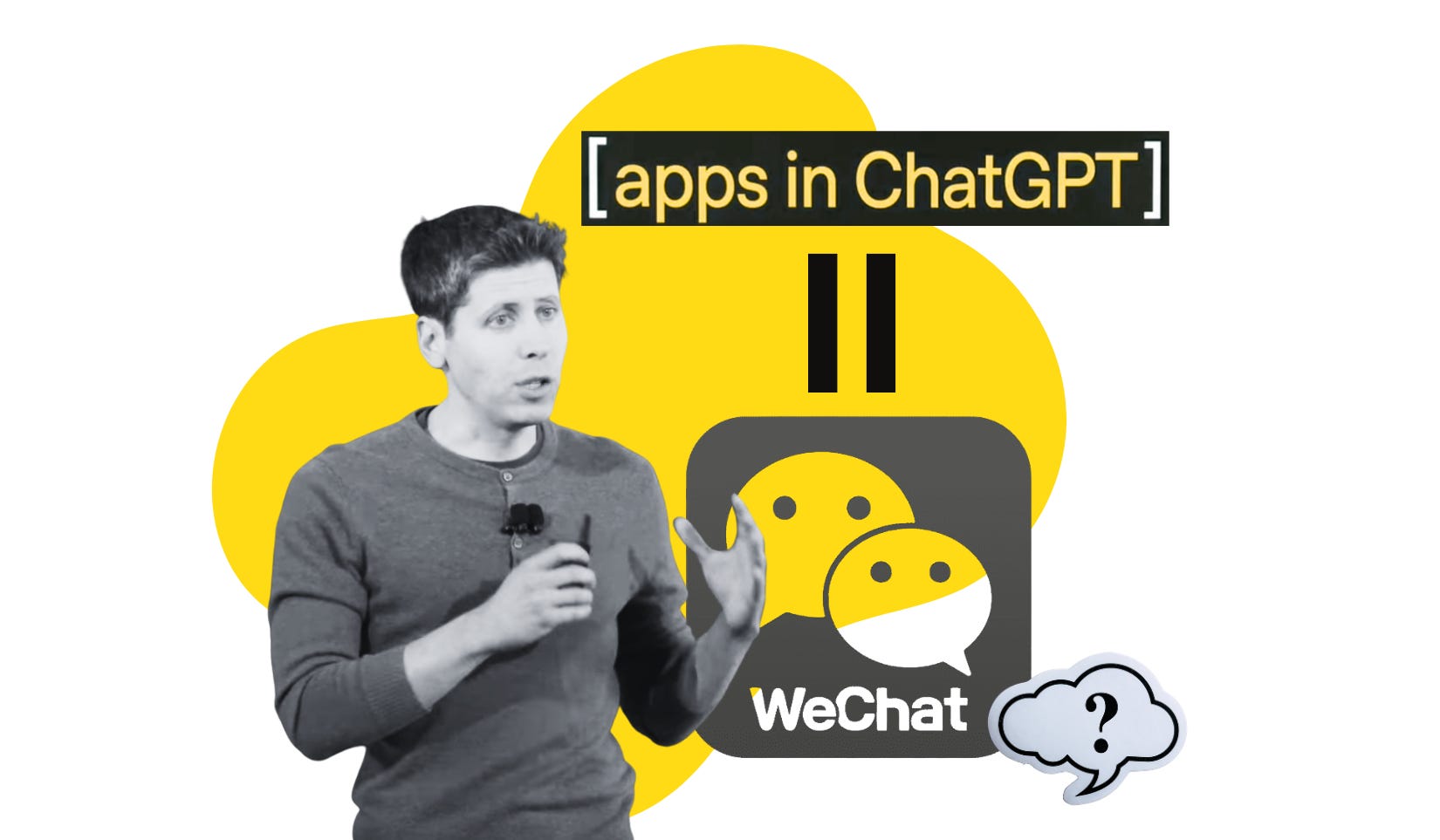Sam Altman had a big day.
A few hours after the AMD-partnership announcement, Altman took the DevDay stage with the headline feature: you can now use other companies’ [apps inside ChatGPT]. Altman’s version of Everything Everywhere All At Once.
Zillow for homes, Expedia/Booking.com for travel, Spotify for playlists, Canva for design, Figma for product work, and Coursera for courses. The pitch is that chat stops being a destination and becomes the place you do things.
If you stopped at the sizzle reel and think the United States has finally found its WeChat, think again.
You’d likely have spotted some glitches if you watched the demo.
Now, let’s start from the beginning, shall we?
TL;DR:
OpenAI launched apps inside ChatGPT, but you still have to tell it which app to use—defeating the “just ask” promise
The demo frictions are real: manual routing, OAuth redirects, and you’ll still open the native app to actually do things
Natural language isn’t always better than tapping an icon—especially when the original interface was already intuitive
It works for one thing: holding context during multi-source research (house hunting, learning). You’re not juggling tabs.
What this really is: A premium research assistant that hands you off, not the “everything app” Altman is selling
Listen to this episode with a 7-day free trial
Subscribe to 2nd Order Thinkers to listen to this post and get 7 days of free access to the full post archives.











